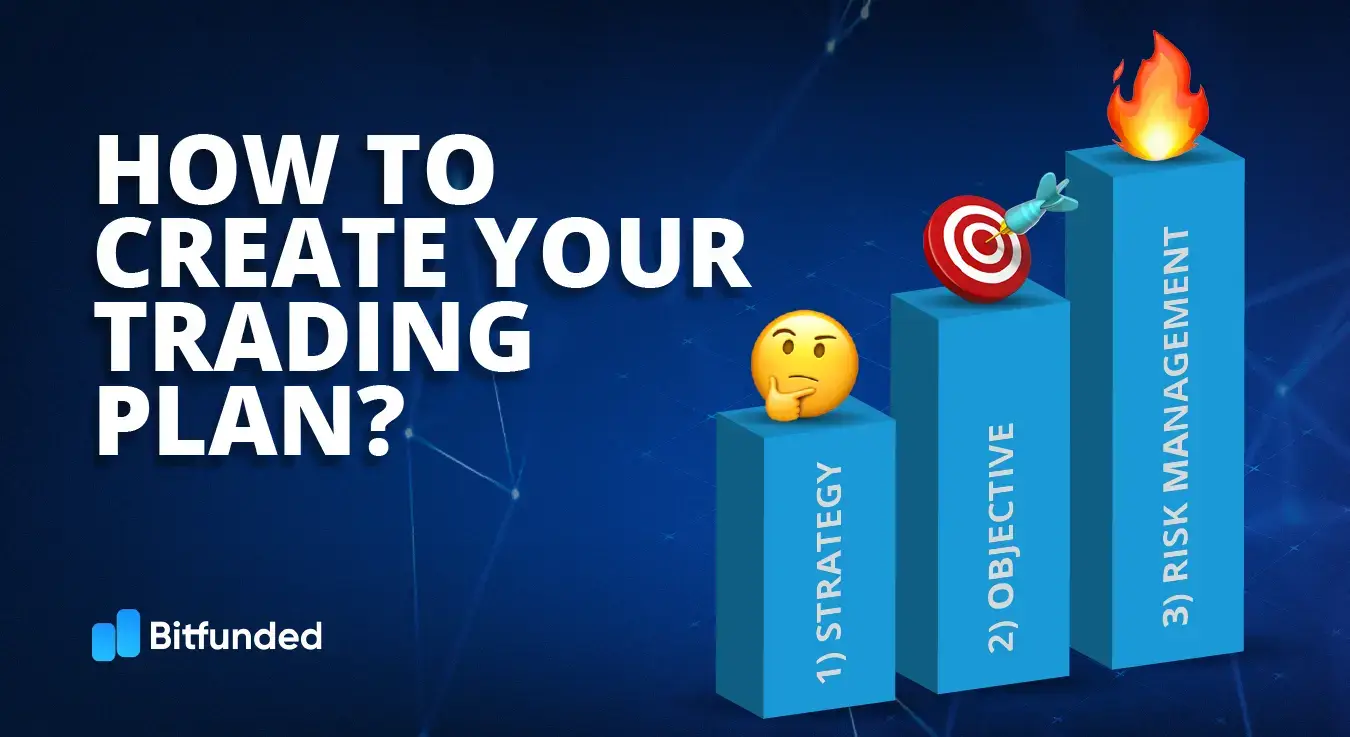How to create your Trading Plan?
A trading plan serves to organize all the details about your entry and exit strategies for a trade. But that’s not all, as a solid trading plan should also include the psychological and management rules that will help you stay focused and prevent you from deviating from your original plan. Therefore, a comprehensive trading plan must be divided into three fundamental points: Strategy, Objectives, and Risk Management.
1) Strategy:
The first thing you should do before creating your trading plan is to have a well-detailed strategy for positioning yourself in the market. With a clear strategy, you just have to follow your own guidelines, and you will never hesitate when you see an opportunity on the chart. To do this, you must detail and understand these four aspects of your strategy: timeframe, trading pairs, entry trigger, and exit trigger.
⏱ ️Timeframe: Know your own trader profile to understand which timeframes you feel comfortable trading in to maintain your routine. While technical price patterns tend to have the same meaning across any timeframe, lower timeframes are often much more volatile and tend to respect market structure and trends less.
🔁 Crypto Trading Pairs: In crypto trading, repetition is key. Therefore, a good option may be to identify 2 or 3 pairs where you usually trade and become an expert in them. Consistently trading the same scenarios, in the same pairs, and at the same times will make it easier for you to identify price patterns. For these reasons, it is advisable to focus on the cryptos with the highest liquidity, such as BTC or ETH.
🎯 Entry Trigger: The goal here is to understand the market confluences and structures that the price of a crypto must develop for you to identify the best time to open a trade. You can apply indicator strategies, market structure strategies, trend reversal strategies, or others. However, be careful not to use a strategy that requires excessive confirmations.
🚫 Exit Trigger: It is essential to detail all possible scenarios that can result from your trade and how to react to them. Define your Stop Loss, Take Profit, and trade management strategy. The goal is to cover all possible scenarios and not leave room for improvisation.
2) Objective:
One of the most critical components of your trading plan should be realistic objectives aligned with the statistics of your trading system. Many traders fall into the trap of defining their goals based on dollars or the number of winning trades, but the key is to define your goals based on your R:R. To do this, you must consider these three concepts:
- Risk Unit (R): This refers to the percentage or fixed value of your account that you will risk and be willing to lose per trade. Thus, in case of a losing trade, you will lose an “R” valued at a percentage or value of your account.
- Risk-to-Reward Ratio (R:R): This is the relationship between the potential profit you expect to make in a trade and your risk unit (R). For example, if your “R” is 100 USDT, and the profit you expect to make in a trade is 200 USDT, then the R:R of the trade is 1:2. You are risking 100 USDT for the opportunity to make 200 USDT.
- Win Rate (WR): After testing and statistically studying your trading strategy, you can determine the success rate of your strategy. For example, if out of 100 trades, 60 end in take profit, then your strategy’s WR is 60%.
Now, having defined your R and knowing the R:R and WR of your strategy, you can determine your realistic objective. For example, if you make 10 trades per month, risking 1% of your account per trade, using a strategy with a 50% WR and a 1:3 R:R, then the numbers indicate that, with this strategy applied in detail, a 10% monthly return is a realistic goal.
3) Risk Management:
Risk management is one of the fundamental elements that differentiates profitable traders from those who lose money in the market. Many traders focus on how to make money, but few focus on how not to lose it. For this reason, knowing all your numbers and parameters about your trades is a key element to managing your risk and avoiding losses in the markets.
To start managing risk, first determine the maximum amount to risk per trade based on the goals of your trading plan. Although there is no precise answer, a common range is between 0.5% and 2% risk per trade. The important thing is to define a risk value based on the maximum loss your trading strategy may suffer if it goes through a losing streak. For example, a 2% risk per trade would cost you approximately 20% of your account if your trading strategy has a drawdown with the potential for 10 consecutive losses.

